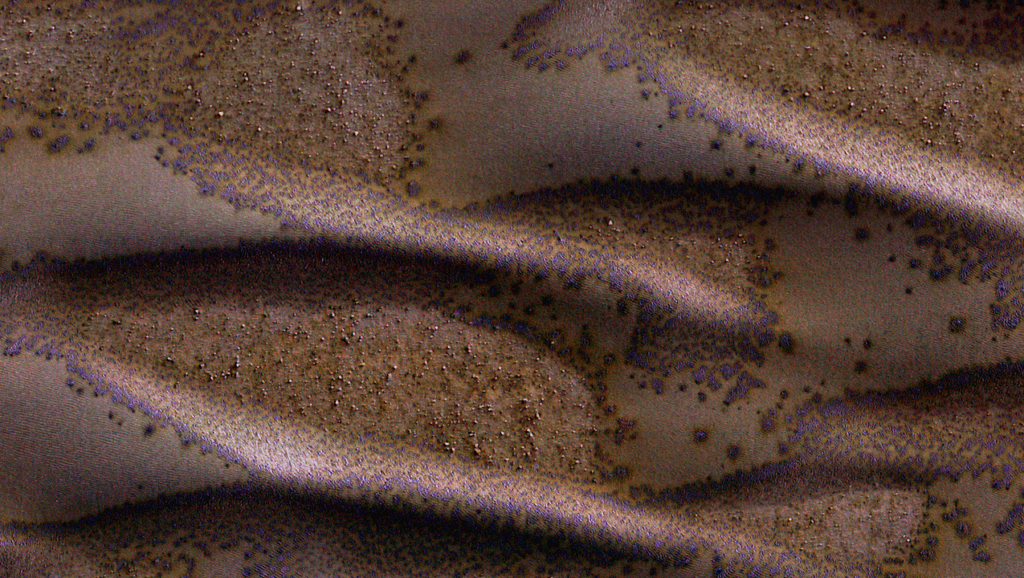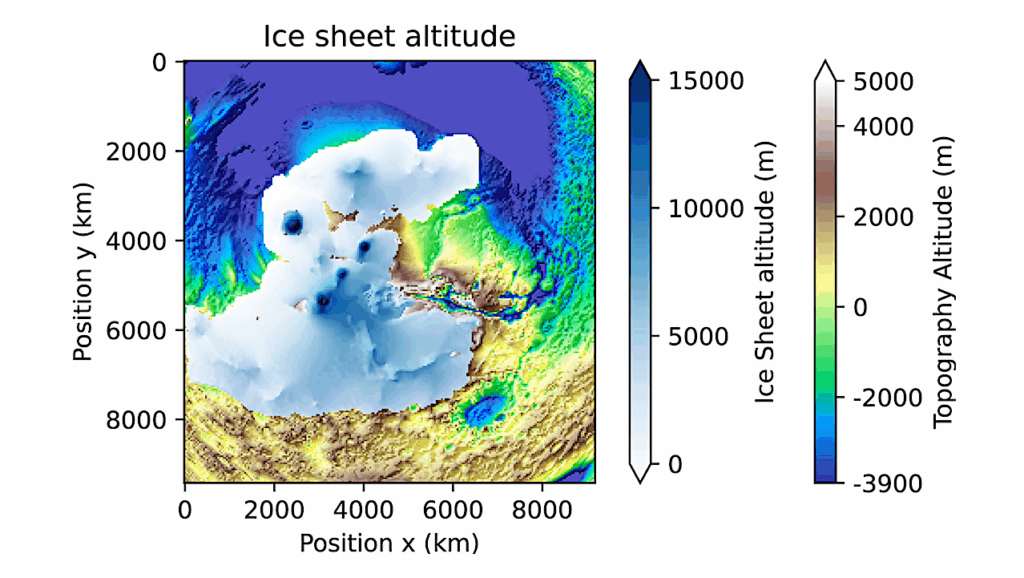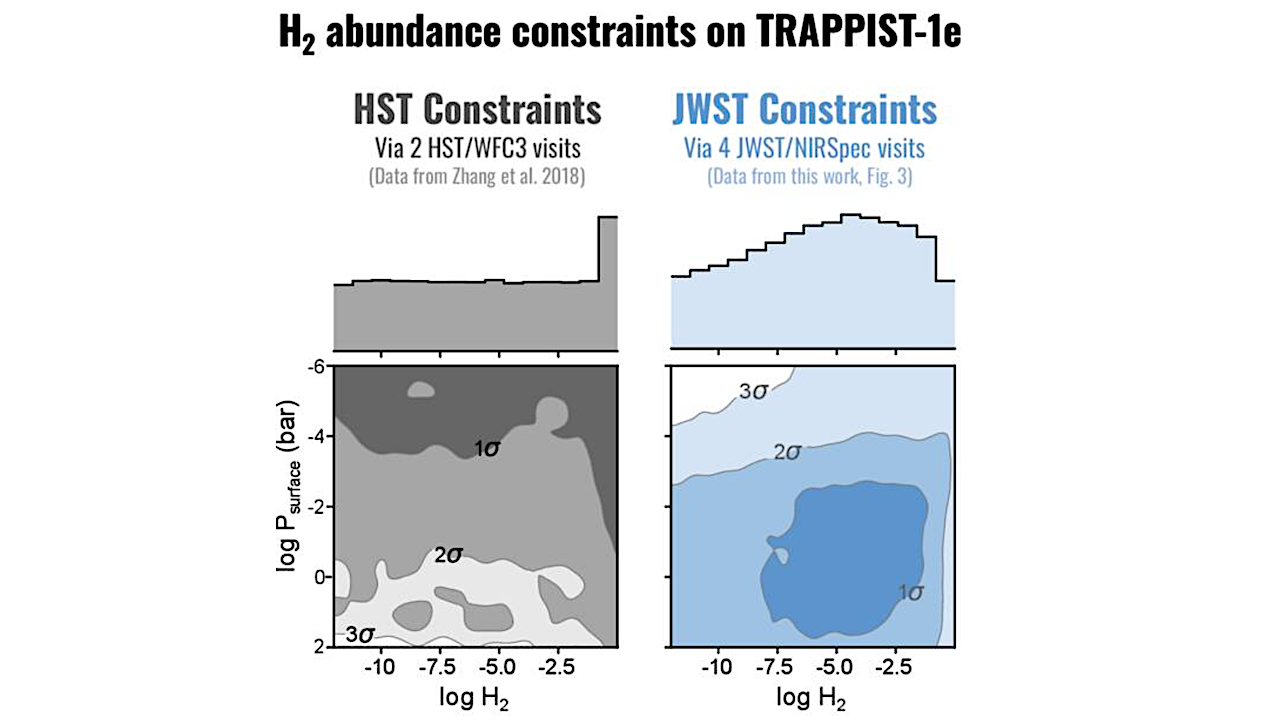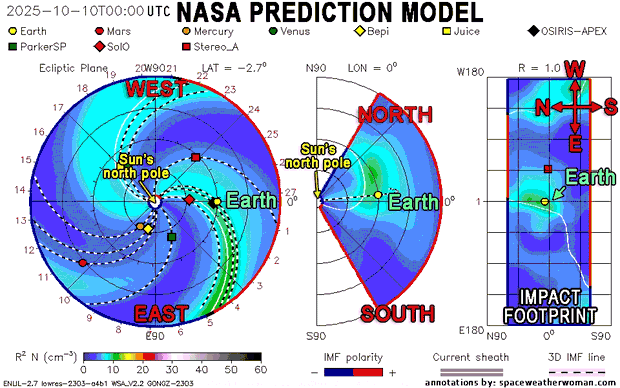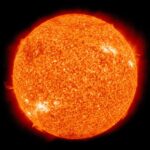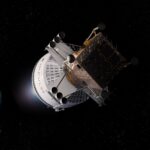Now Reading: JWST-TST DREAMS: Secondary Atmosphere Constraints for the Habitable Zone Planet TRAPPIST-1 e
-
01
JWST-TST DREAMS: Secondary Atmosphere Constraints for the Habitable Zone Planet TRAPPIST-1 e
JWST-TST DREAMS: Secondary Atmosphere Constraints for the Habitable Zone Planet TRAPPIST-1 e
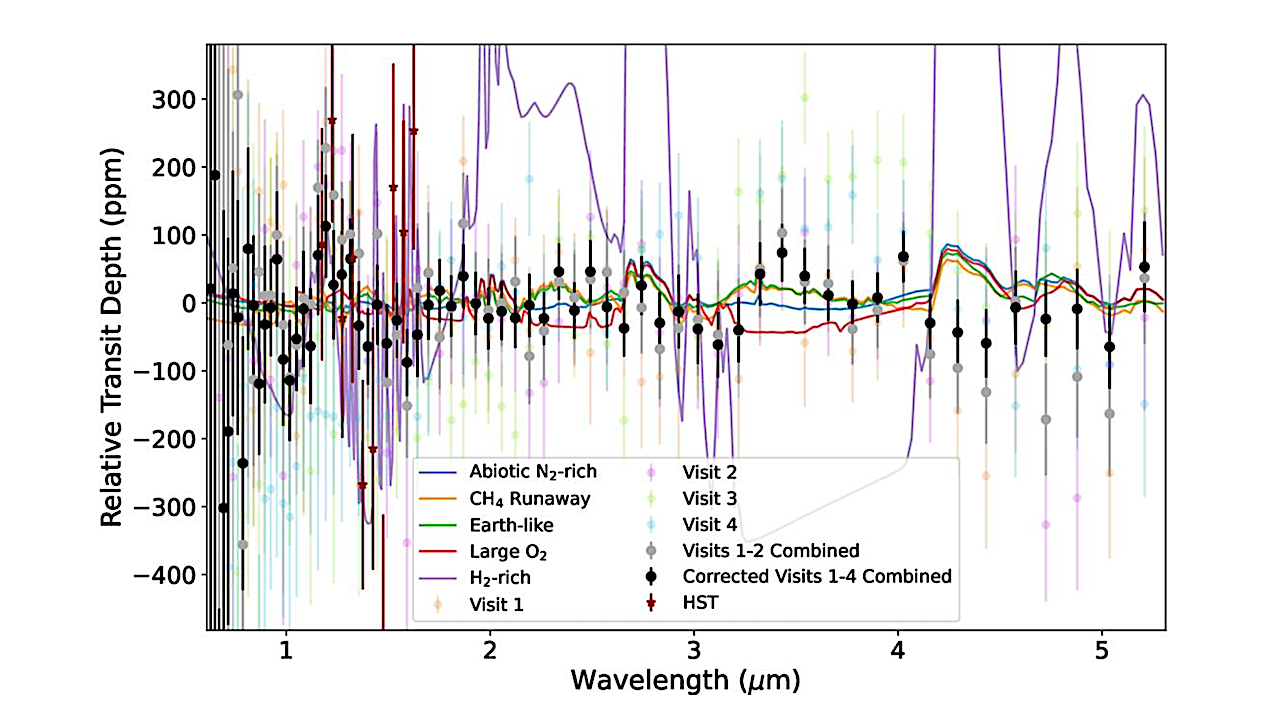

JWST NIRSpec PRISM transmission spectra compared with modeled atmospheric scenarios. The x-axis shows wavelengths in microns, while the y-axis shows the transit depth in parts per million. Each of the individual visits (translucent colored circles with error bars), the combination of visits 1 and 2 (gray circles with error bars), and the stellar-contamination-corrected four-visit spectrum from N. Espinoza et al. (2025; black circles with error bars) are compared to the HST data from J. de Wit et al. (2018; dark red stars with error bars). An array of forward-model spectra for different atmospheric scenarios is overlaid (colored lines). Atmospheric models rich in H2 can be easily ruled out, while many high mean molecular weight scenarios are consistent with the JWST data. — IOPscience
The TRAPPIST-1 system offers one of the best opportunities to characterize temperate terrestrial planets beyond our own solar system.
Within the TRAPPIST-1 system, planet e stands out as highly likely to sustain surface liquid water if it possesses an atmosphere. Recently, we reported the first JWST/NIRSpec PRISM transmission spectra of TRAPPIST-1 e, revealing significant stellar contamination, which varied between the four visits.
Here, we assess the range of planetary atmospheres consistent with our transmission spectrum. We explore a wide range of atmospheric scenarios via a hierarchy of forward modeling and retrievals.
We do not obtain strong evidence for or against an atmosphere. Our results weakly disfavor CO2-rich atmospheres for pressures corresponding to the surface of Venus and Mars and the cloud tops of Venus at 2σ.
We exclude H2-rich atmospheres containing CO2 and CH4 in agreement with past work but find that higher mean molecular weight, N2-rich atmospheres with trace CO2 and CH4 are permitted by the data. Both a bare rock and N2-rich atmospheric scenario provide adequate fits to the data but do not fully explain all features, which may be due to either uncorrected stellar contamination or atmospheric signals.
Ongoing JWST observations of TRAPPIST-1 e, exploiting consecutive transits with TRAPPIST-1 b, will offer stronger constraints via a more effective stellar contamination correction.
The present work is part of the JWST Telescope Scientist Team Guaranteed Time Observations, which is performing a Deep Reconnaissance of Exoplanet Atmospheres through Multi-instrument Spectroscopy (DREAMS).
JWST-TST DREAMS: Secondary Atmosphere Constraints for the Habitable Zone Planet TRAPPIST-1 e, IOPscience (open access)
Astrobiology,
Stay Informed With the Latest & Most Important News
-
 012024 in Review: Highlights from NASA in Silicon Valley
012024 in Review: Highlights from NASA in Silicon Valley -
 02Panasonic Leica Summilux DG 15mm f/1.7 ASPH review
02Panasonic Leica Summilux DG 15mm f/1.7 ASPH review -
 03How New NASA, India Earth Satellite NISAR Will See Earth
03How New NASA, India Earth Satellite NISAR Will See Earth -
 04And Thus Begins A New Year For Life On Earth
04And Thus Begins A New Year For Life On Earth -
 05Astronomy Activation Ambassadors: A New Era
05Astronomy Activation Ambassadors: A New Era -
06SpaceX launch surge helps set new global launch record in 2024
-
 07Space Force plans new ‘Futures Command’ amid pressure to speed up modernization
07Space Force plans new ‘Futures Command’ amid pressure to speed up modernization













